Modern wearables solve many problems, the most relevant of which is how to streamline our data and notifications. Unfortunately, when you look at the bigger picture such things are nothing more than trivial. A device that allows you to better — and more quickly see — smartphone messages does not help those starving in a far-off third world country. To be perfectly honest, sometimes it difficult for even us here at Smartwatches to justify the state of the market compared to the state of the entire world.
While we have argued that smartwatches and wearables can be incredibly practical, there is an air of sillyness to it all when their inherent and true purpose is to offer nothing more than convenience. Sure, they make using our smartphones very convenient, but again that doesn’t help others elsewhere in the world. Fitness trackers telling you to get off the couch ultimately have no affect on the greater good.
It begs the question, what kind of problems can wearables actually solve then? We embarked on a search to figure out just that. Instead of talking about the many things a smartwatch can do for the average consumer, we decided to shake things up a bit and seek out some cases where wearables actually did solve real world problems.
Five Cases of Wearables Solving Problems in the Real World
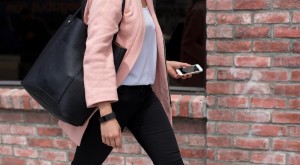 It’s always interesting to see how a particular form of technology or new gadget can be used in the real-world to solve a problem. For instance, by just looking at the most common devices that rechargeable batteries power you’d only see things like smartwatches, smartphones, portable game consoles, electric vehicles, and lots of consumer electronics.
It’s always interesting to see how a particular form of technology or new gadget can be used in the real-world to solve a problem. For instance, by just looking at the most common devices that rechargeable batteries power you’d only see things like smartwatches, smartphones, portable game consoles, electric vehicles, and lots of consumer electronics.
Of course, when you expand that idea to look at all of things batteries service you can see things like life-saving medical devices, construction machinery and equipment, generators and power supplying equipment and much more. The truth is, even something as simple as a battery can solve some pretty big real world problems.
So, what are some cases of wearables solving problems in the real world?
Sleep Tracking Wearables Solving Problems for Those with Sleep Apnea
Every year, more than a million people affected by sleep apnea get into car accidents, which is the direct cause of more than 1,000 deaths. Sleep apnea is a pulmonary disorder that sees the throat muscles relaxing a little too much, in turn blocking the trachial airway. The disease causes many health issues including heart disease, memory loss, cancer, obesity, clinical depression, diabetes and more. In total, it’s responsible for an estimated $3.4 billion in medical expenses, and an additional $16 billion thanks to automotive accidents.
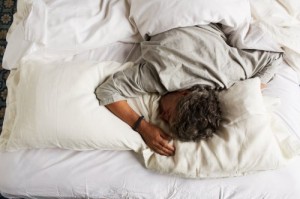 Sadly, it’s difficult to diagnose even though there are some rather obvious symptoms such as loud snoring, and misplaced daytime fatigue. Why? Because it’s incredibly expensive; the equipment used to diagnose such a thing cost an average of $3,000 per use. Since subsequent testing is necessary when dealing with the disease — follow-up testing appointments on a weekly or monthly basis — it can get ridiculous.
Sadly, it’s difficult to diagnose even though there are some rather obvious symptoms such as loud snoring, and misplaced daytime fatigue. Why? Because it’s incredibly expensive; the equipment used to diagnose such a thing cost an average of $3,000 per use. Since subsequent testing is necessary when dealing with the disease — follow-up testing appointments on a weekly or monthly basis — it can get ridiculous.
However, thanks to a new device all of that may change. The SleepImage is a small wearable that comes in the form of an oval-shaped disc. The user attaches the device to their chest, close to the heart and it monitors biometric data to identify sleeping disorders like sleep apnea. After a night of monitoring, the device can be attached to a computer and the data is uploaded to a HIPPA-compliant website for analyzation. Information like REM sleep, snore counts, sleeping positions, movement frequency and interruptions are tracked in full. In turn, this data could be used by a licensed physician to recommend solutions whether that be medicine or equipment related. Better yet, an optional prescription-level service offers more detailed clinical data for doctors.
The SleepImage is only $249 — compared to the thousands of dollars that the professional equipment costs — and a regular service subscription is $99 per year, while a prescription-level service subscription is $149 per year.
Aside from the obvious financial benefits, this means that the patient can spend time sleeping at home in their own bed, where they’re most comfortable. Generally, during the diagnosis stage of sleeping disorders like sleep apnea patients often have to spend time sleeping in a lab, office or hospital. Not only can this be difficult, it can cause anomalies in the monitoring since the patient isn’t exactly sleeping the way they normally are at home.
If you’d like to know more about the SleepImage head on over to the official site. For now, it’s good to know that modern wearables can serve a greater purpose. In this case, saving lives by helping doctors and patients better diagnose a disease — and in turn hopefully allowing them to be safer out in the world.
Fashion Wearables Solving Problems with Sun Exposure
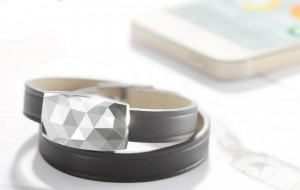 It seems silly for a device to remind us when we’re getting too much sun, as we’ve always been warned by health professionals that too much can directly cause skin cancer, among a bevy of other health-related issues. Unfortunately, it’s sometimes hard to discern just how much is too much. Worse yet, many of us don’t even bother applying sunscreen, let alone the right level of it. That’s why devices like the Netatmo June could potentially save lives. It’s not the only sun-measuring wearable on the market, so don’t worry if it’s not exactly your style (you can find an alternative). That said, it’s still one of the most prominent models out there and that’s certainly worth exploring.
It seems silly for a device to remind us when we’re getting too much sun, as we’ve always been warned by health professionals that too much can directly cause skin cancer, among a bevy of other health-related issues. Unfortunately, it’s sometimes hard to discern just how much is too much. Worse yet, many of us don’t even bother applying sunscreen, let alone the right level of it. That’s why devices like the Netatmo June could potentially save lives. It’s not the only sun-measuring wearable on the market, so don’t worry if it’s not exactly your style (you can find an alternative). That said, it’s still one of the most prominent models out there and that’s certainly worth exploring.
The June syncs directly with an iOS device and alerts wearers when they’ve had too much exposure to the sun’s rays. It monitors information like UV intensity in real-time and even tracks the wearer’s daily habits and exposure levels. It takes into account your skin type and returns the maximum amount of exposure you can be subjected to. This information is then relayed through a mobile app, allowing you to monitor your outdoor exposure. Of course, it also works the opposite way and let’s you know when you’re not getting enough sun. If you stay inside all day long — or in the office — that can affect your health just as well.
Don’t think this is solving any big problems with the world? Think again. Every year an estimated 5 million people in the US alone are treated for skin cancer. In one of the most recent studies — conducted in 2006 — a total of 3.5 million skin cancer cases were diagnosed in just 2.2 million people. Needless to say, it’s a pretty big deal.
Wearables Solving Problems with Back Pain and Related Injuries
![]() Back problems and related injuries aren’t necessarily fatal, but they sure can contribute to a huge decrease in quality of life. Lower back pain has an estimated lifetime prevalence of 84% worldwide, with the worldwide prevalence of lower back pain around 23%. To put that into layman’s terms, lower back pain is exceptionally common. In fact, in 2005 the Trades Union Congress (TUC) offered an estimation that just about 4.9 million working days per year are lost thanks to some form of back pain.
Back problems and related injuries aren’t necessarily fatal, but they sure can contribute to a huge decrease in quality of life. Lower back pain has an estimated lifetime prevalence of 84% worldwide, with the worldwide prevalence of lower back pain around 23%. To put that into layman’s terms, lower back pain is exceptionally common. In fact, in 2005 the Trades Union Congress (TUC) offered an estimation that just about 4.9 million working days per year are lost thanks to some form of back pain.
That’s why wearables like the Lumo Body Tech are so great. The Lumo Lift is a device that will identify your posture while sitting and let you know when you’re slouching; it will also let you know when you should be standing tall. Small vibrations are sent to the wearer, serving as a personal notification of sorts. It also has a connection to your mobile device, allowing you to track various stats on posture and personal health.
The idea is that devices like this will help you retain a good posture, resulting in less back pain issues later in life. Of course, if you already have back pain this may not alleviate all of your issues, but it can certainly help prevent the condition from worsening.
Bluetooth Wearables Solving Problems with Ebola
The US Agency for International Development recently awarded a small, wearable, stick-on device funding that is designed to allow medical professionals and physicians to monitor Ebola patients’ vitals remotely. This is extremely promising considering Ebola happens to be a virus where contact and exposure needs to be minimalized in order to prevent it from spreading. That’s why it’s such an epidemic right now in Africa. Most of those areas do not have the technology, knowitall and resources to handle the virus without directly coming into contact with those who are affected by it.
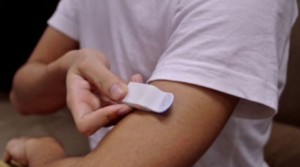 The stick-on wearable in question is about the size of a band-aid and attaches directly to the patients’ skin. It can monitor health data like heart-rate, respiratory rate, and oxygen saturation. Perhaps, the most important feature is that it’s disposable.
The stick-on wearable in question is about the size of a band-aid and attaches directly to the patients’ skin. It can monitor health data like heart-rate, respiratory rate, and oxygen saturation. Perhaps, the most important feature is that it’s disposable.
Thanks to wireless Bluetooth connectivity, the device transmits the collected data to nearby computers, smartphones or tablets. The information is then compiled and collected thanks to unique software, which doctors can then remotely access online.
The wearable was developed by Dr. Steven Steinhubl at the Scripps Translational Science Institute and is just one of many “wearable technologies” he and his department currently have in development.
“The new approach will provide unprecedented visibility into a patient’s physiology that we believe will be invaluable in improving care and minimising risk of exposure during an Ebola virus outbreak,” Dr. Steinhubl, says. “This will open the door to being able to identify warning signs very early on, when potentially lifesaving care can be provided.”
Wearables Solving Problems By Notifying of Epileptic Seizure
A wearable was recently funded on IndieGoGo that not only aims to offer fitness tracking, and stress monitoring but also emergency notifications for epileptics. The device is called Embrace, and when an epileptic — who is obviously wearing it — experiences a seizure the device will automatically notify a variety of contacts so they can provide assistance.
B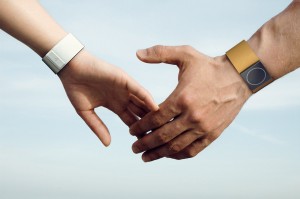 elieve it or not, 1 in every 26 people in the US will suffer from the ailment at some point in their lifetime according to the Institute of Medicine. In addition, more people die of Sudden Unexpected Death in Epilepsy than from house fires every year.
elieve it or not, 1 in every 26 people in the US will suffer from the ailment at some point in their lifetime according to the Institute of Medicine. In addition, more people die of Sudden Unexpected Death in Epilepsy than from house fires every year.
Embrace is worn on the wrist like any other smartwatch or wearable, and when signs of a seizure are detected it will alert friends, family or caregivers (as selected) what’s happening through a smartphone app. In addition, a companion Embrace device can be worn which will vibrate to alert the caregiver. The device monitors electrodermal activity (EDA) which activates and becomes increasingly apparent during a seizure.
Of course, it also functions as a stylish smartwatch and fitness tracker too which is always a plus. The bit concerning wearables solving problems by saving lives is much more commendable, though.
Wearables Solving Problems in the Real World Every Day
Even though we only covered five cases of wearables solving problems in the real world there are many more out there. Since the wearable tech niche also has lots of innovation happening at the moment, there are many more such uses to come in the near future. Do you happen to know of any wearables solving problems?
